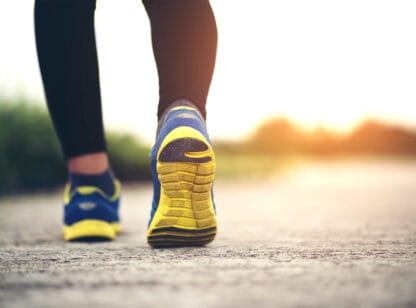During the summer, trainers and athletic organizations across the country offer weekend speed camps aimed at teaching young athletes to run a faster 40, jump higher and be quicker. These camps are usually only two days and maybe six hours a day with emphasis on time spent on the track running and jumping.
What many don’t realize is that you can’t make someone faster by just working at the track. In fact, there are many things to consider before even going to the track!
Genetics. Regardless of the hours spent at the track to become stronger and more balanced, if you don’t possess the genetics, the best you can hope for is some improvement in what your body is built to do. The make-up of your muscle fibers determines if you are more dominant with fast twitch or slow twitch. The fast twitch fibers (Type IIb or IIx) are those that produce speed in short bursts (up to 15 seconds) while slow twitch fibers (Type IIA) are highly oxidative and require the transport of oxygen (best for marathon runners and long-distance athletes). So having a genetic make-up of predominately slow twitch fibers is not advantageous to running faster.
Technique. We can’t stress enough with athletes that form is critical to running faster and more efficiently. This involves everything from how you set your body up from the start with a forward lean and relaxed posture, to keeping your head down and using both your arms and legs correctly through various drills. It doesn’t mean that you can take an athlete from a 4.9 down to a 4.3; that is just nearly impossible. But from a 4.5 to a 4.4 is possible! Cutting milliseconds off is huge is sports, and this can be attainable.
Length/tension relationship. There is a difference in feeling tight and actually being tight! What stops most runners from running faster, especially football players, are tight hamstrings. Whether they really are tight, or they are just in protection mode to prevent an injury, can only be determined from an athletic assessment. For this article, let’s just say they are tight. If you can’t extend your leg out and keep your center of gravity by recovering quickly, you will not run as fast as you possibly could. Having a good ratio of strength and muscle tension between your quadriceps and your hamstrings is optimal for peak performance and for injury prevention.
Recovery/nutrition. Being smart and not overtraining will keep you from both burn out and potential injury. Watching the amount of time under tension and the number of days focusing on getting faster is critical to your success. Also, eating healthy and staying away from processed foods, watching both sugar and sodium intake while drinking enough water (urine should be clear) keeps your muscles hydrated and your cells filled with good fuel.
While getting stronger and working out at the track is important, all the above factors need to be addressed while keeping in mind that your genetic make-up determines how fast you can really run. There are now DNA tests that can be done to determine this, but they can be expensive. In general, working on technique, drills, stretching, nutrition and recovery will advance your skills in the right direction.
Michael K Butler B.A.; P.T.A.; CSCS*D; RSCC*D; NMT is co owner of Kinetix Health and Performance Center in Palm Desert and can be reached at (760) 200.1719 or
[email protected]. www.kinetixcenter.com.









































Comments (0)